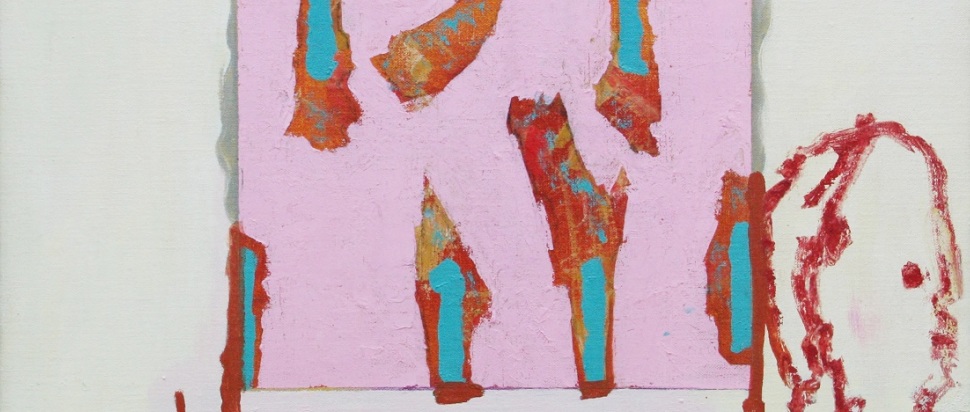Prunella Clough @ 42 Carlton Place, Glasgow
Prunella Clough (1919-1999) created an expansive body of work as an abstract painter. 42 Carlton Place displays the enviable breadths of her practice and interests
With 21 paintings representing the enviable breadths of painter Prunella Clough’s career and experimentations, you’d be forgiven for wondering if the works from 1944-99 were actually the work of several artists. In the back room, the first of these works chronologically is the dark but luminous Study for a Scene on Ruined Beach. The tone and palette are metallic, and the canvas of the painting itself could be mistaken for a plate of aluminium or steel, looking as heavy and conversely luminous as it does. It sings next to the noisy, holey surface of the hot pink abstraction next to it, which looks a lot like what might be left after one pulls some plasterboard away.
Each one is dense in allusion. Some of Clough’s reference images can be found in one of the catalogues by the entrance. There isn’t a one-to-one direct relationship between them and any single painting, but nevertheless there’s the sense of Clough observationally quoting an elegant shape or texture, then amassing and mixing these visual samples into abstract concentrations.
See for instance Soft Ring. This work is in a rich turquoise and a thick, opaque beige cream. The oval-ish shape in the middle of the composition has angles that one might mistake for the outline of a rounded-off, abstract cube shape. In the background, a line of rich blue-green goes in and out of focus as Clough seems to have carefully blotted parts out, perhaps with calculated spills of turpentine on the oil paint. The effect is to create further ambiguous depth and the texture of marble or blue cheese.
This central composition recurs in what looks like the whirling, smokey crystal ball cloud that fills the portrait-oriented rectangle of Sweet Jar, the perfect circle in By the Seaside I – surrounded here by two green and red cloud shapes – and the lightly-sketched onion in the 1957 mixed media on paper work of the same name. This recurrence among the visual variety of the abstract paintings gives a sense of Clough’s wandering and captious eye that collects a diverse vocabulary of unpredictable forms and shapes, then subtly and patiently reinvents an ingenious grammar across the works on show.
42 Carlton Place, Glasgow, until 28 Apr, Thu-Sun, 12-6pm
